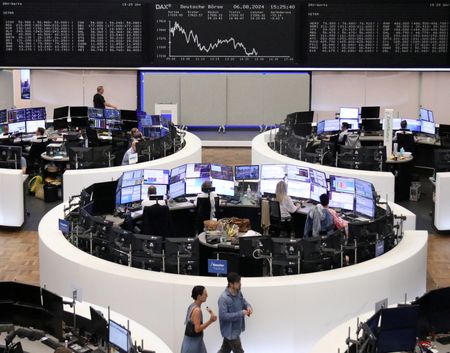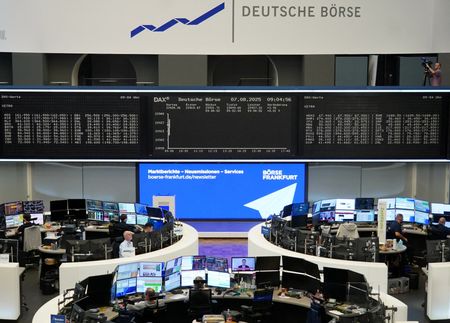By Yoruk Bahceli
LONDON (Reuters) -As if Europe’s cash-hungry finance ministers didn’t have enough to worry about. An overhaul of the Dutch pension system is depriving the euro zone’s $10 trillion government bond market of a key buyer of its long-term debt, just as state funding needs surge.
The Dutch private pension sector, the bloc’s largest which oversees more than 1.7 trillion euros ($2 trillion) of assets, will move to a defined contribution system – as opposed to defined benefit – from next year.
For governments looking to issue debt to fund their spending needs, it’s a big change. Long-term debt has many advantages for governments because they are able to plan out their interest liabilities for longer. But under the new Dutch system, pension funds will have less need to buy bonds – and longer-dated bonds in particular – as they will no longer promise specific long-term benefits and will be able to take on more risk overall.
Dutch pension funds are already stepping back from buying longer-dated bonds, according to a senior trader at BofA, just as Germany prepares to triple its borrowing.
It’s unclear how quickly funds will unwind their bond holdings and their hedges against risk, and how they will invest in future, adding to the uncertainty.
“You’re in a paradigm shift where you’ve had the largest-duration buyer in Europe disappear,” said BofA’s EMEA head of linear rates trading Kal El-Wahab. “They haven’t been buying all year.” “In a world where there’s already a supply-demand imbalance going on, as sovereigns need to raise more cash than they ever have, losing one of the largest buyers of duration in Europe is very, very material.” Longer-dated government bonds have been under pressure globally this year, prompting Japan and Britain to shorten the maturities of their issuance, as other key buyers have stepped back there too. But in the euro zone, pension fund reform “comes when Germany has to do more than it has ever done on the issuance front,” said Barclays’ head of euro rates strategy Rohan Khanna.
STEEPER CURVES The additional premium that benchmark borrower Germany pays for 30-year debt over shorter maturities has already risen this year.
Traders say anticipation of the reform has been one driver.
So far, the long end of the German yield curve has steepened roughly in line with other regions, but the trend may have further to run. “The market’s consensus is still for steepeners,” said Credit Agricole CIB’s head of European government bond trading Bruno Benchimol. BofA’s El-Wahab expects the German 10/30-year yield curve, currently at around 50 basis points, could steepen another 20-25 basis points and lead other markets from here. Declining demand from Dutch pension funds is “something (governments) have to take into account when coming up with (funding) plans,” said ABN AMRO rates strategist Jaap Teerhuis, who previously headed the Dutch Treasury’s dealing room. SEISMIC SHIFT Dutch banks estimate pension funds will eventually sell around 100 billion euros of government bond holdings. But their holdings aren’t as long-dated and many of the long-dated bonds they bought have rolled down the curve over the years, BofA’s El-Wahab noted. “It’s not clear they’re going to be selling long-dated bonds in order to do this transition … The very seismic shift is just the absence of them on a forward-looking basis.” The biggest source of uncertainty is how quickly funds will reduce those holdings and what role bonds will play in funds’ post-transition portfolios, ABN’s Teerhuis said. A plan from ABP, the country’s largest pension fund, which manages 520 billion euros in assets, points to a gradual shift. It suggests ABP will shed around 25 billion euros of government bonds by 2030, but its exposure will remain unchanged in 2027 compared with 2023.
Analysts said they expect even greater curve steepening in the swaps market.
Pension funds have hedged their interest-rate risk by putting on long-dated swap trades to receive fixed-rate payments, but will now raise cash to close those trades, most likely by selling bonds. The next hurdle for markets is January 2026, when three of the five biggest funds plan to start switching to the new system, according to Barclays. But analysts aren’t ruling out delays, which could stoke volatility at year-end. One of the three, PMT, has said it will assess in December and once again in January whether it’s ready to transition. “We will know about the final ‘go, no-go’ very perilously close to the transition date,” Khanna said.
(Reporting by Yoruk Bahceli; Editing by Amanda Cooper and David Holmes)










